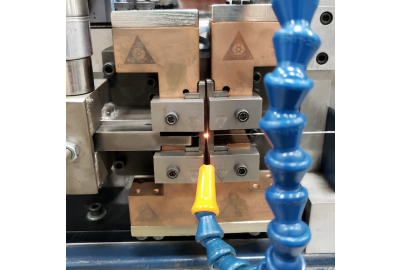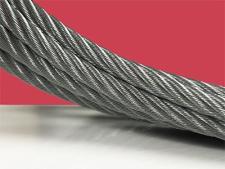No matter the length your mechanical cable application calls for, eventually all cable is cut. In most cases, the cut lengths are terminated with fittings, such as a ball and shank, eyelet or threaded plug. But in other cases, the cable is simply cut and installed. Regardless of your mechanical cable requirements, cutting your cables will be necessary. And no matter what application requirements you are meeting, how you go about cutting mechanical cable depends entirely upon the material you are using to construct the cable itself.
Mechanical cables made of stainless or galvanized steel can be cut mechanically, either with a cutting machine or Felco cable cutters. In most cases, with stainless and galvanized steel, the individual wires in the cables will not fray when mechanically cut. Often times, smaller cables, less than 3/64th inch in diameter, routinely used in medical devices or even medical implantables, cannot be mechanically cut without fraying. Mechanically cutting such cables risks the individual wires coming loose, which may expose loose wire to the human body or prevent a surgical instrument from working properly. Therefore, such miniature mechanical cables should be electrocut, which fuses the cut ends together to form a welded end.
Tungsten, however, a refractory metal, which tolerates far greater temperatures than steels, requires additional steps to keep the ends from separating.
While stainless steel is commonly used in mechanical cable assemblies found in many medical devices today, tungsten is emerging as a preferred mechanical cable material in the area of surgical robots. And with tungsten cable comprising wire often smaller than human hair, it’s critical to understand the complex ways with which tungsten cables must be cut.
Electrocutting Tungsten
Tungsten has the highest melting point of all metals known to man, making it ideal where heat is a variable. In the case of cutting tungsten cables however, simply electrocutting them won’t work because what typically happens in the fusing portion of the electrocutting process isn’t sufficient to bond the wires together. Because tungsten melts at a temperature higher than is capable of being produced via electrocutting, one would only achieve an extremely brittle seal at the end of the cable. Due to that brittle seal, it requires the cable to be processed further to achieve an effective welded end.
The preferred method of fusing the ends of tungsten cables would be to plasma weld them, which will provide an effective seal and prevent the cable from fraying. The plasma ends produced may be rounded to provide easy assembly into component devices. This method has proven to be a reliable approach to achieving a bonded end.
Sava: The Tungsten Cable Experts
Sava works with the pioneers currently using tungsten cables to build tomorrow’s surgical robots. So, we understand the need for quality in the cables used for these sophisticated and evolving applications. Visit Sava’s contact page to get in touch with a tungsten expert today!






